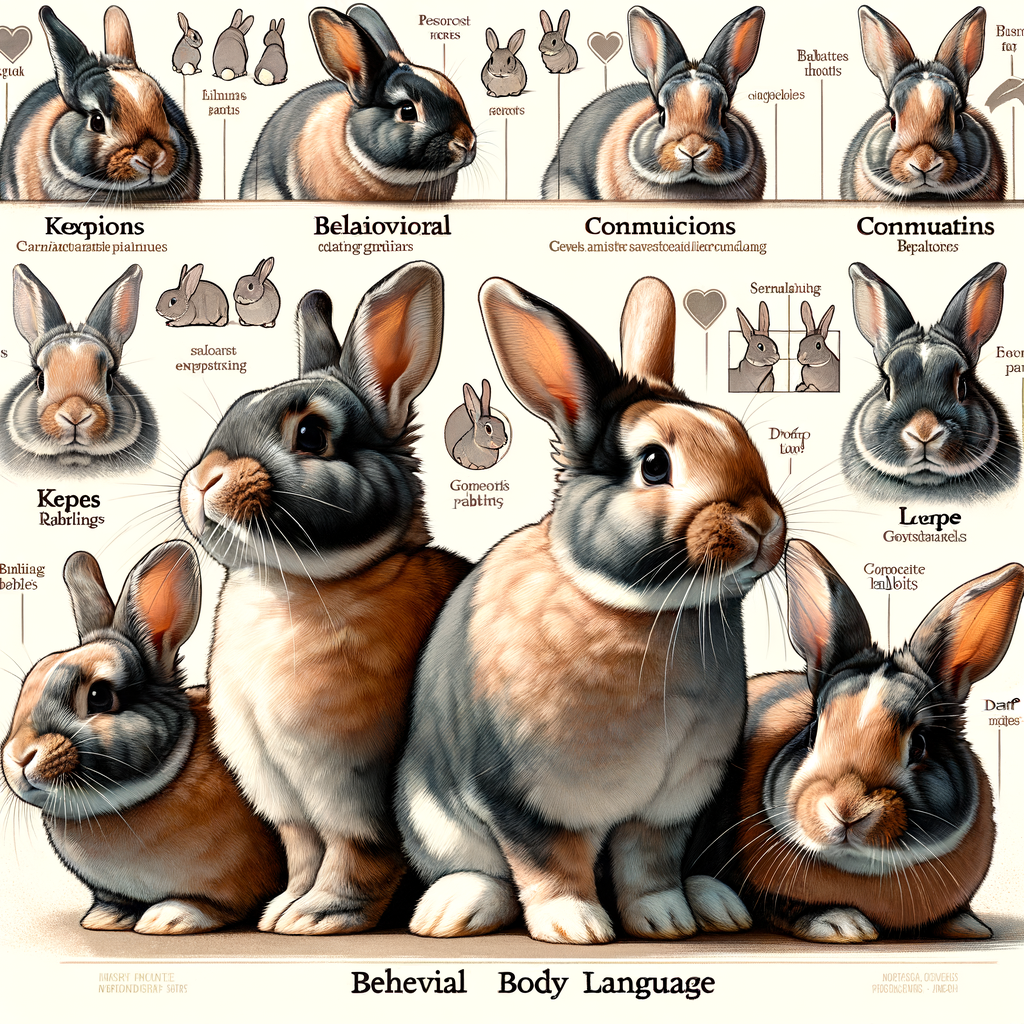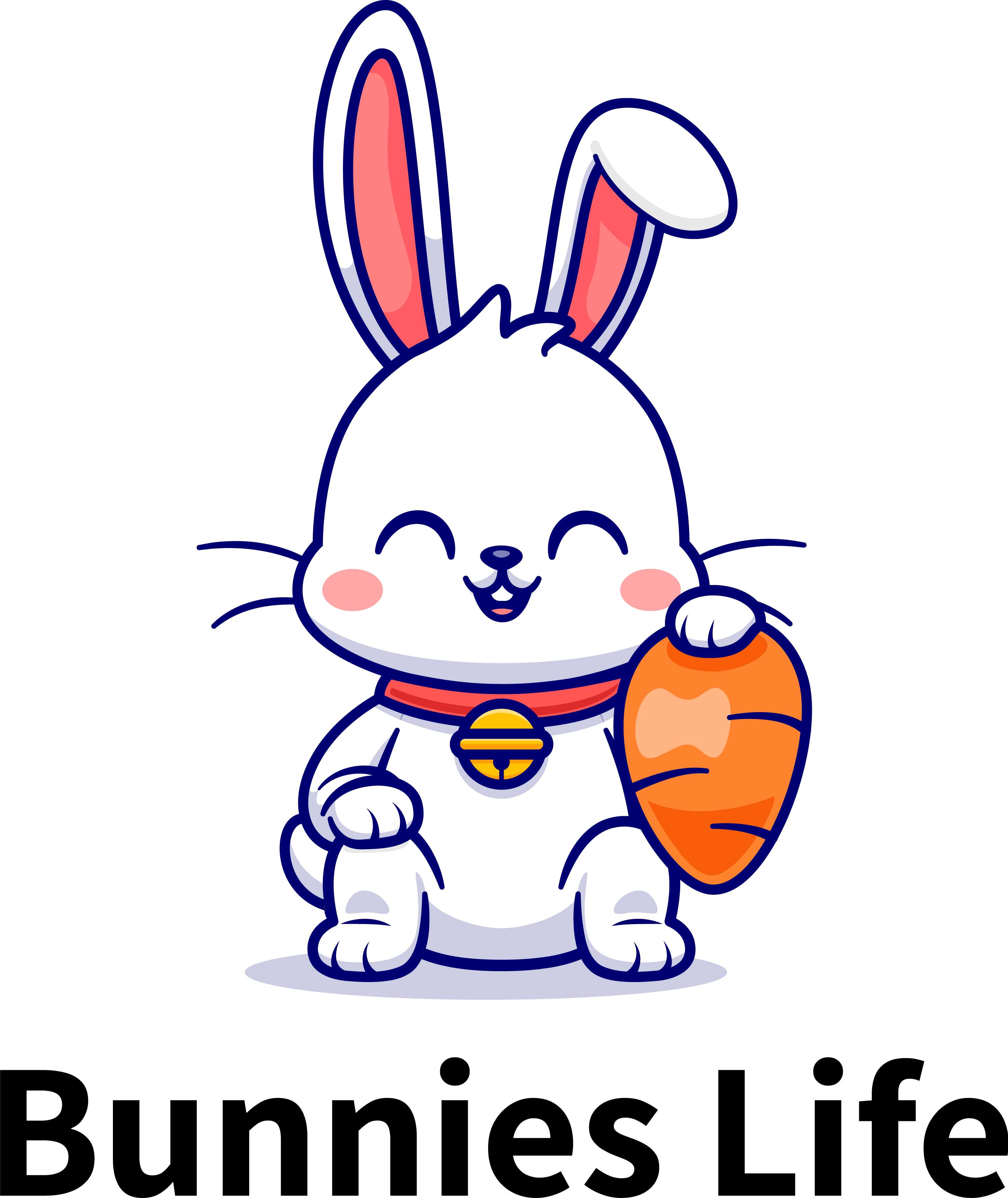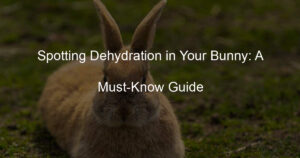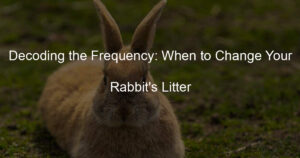
Introduction to Dwarf Rabbits Communication
Communication is a fundamental aspect of any relationship, and it’s no different when it comes to our furry friends, the dwarf rabbits. Understanding their unique ways of communication can significantly enhance your bond with them. This section will delve into the importance of understanding rabbit body language and the basics of dwarf rabbit behavior.
-
Importance of Understanding Rabbit Body Language
Rabbits, like many other animals, primarily communicate through body language. By observing their movements, postures, and facial expressions, we can gain a deeper understanding of their emotions and needs. For instance, a rabbit thumping its hind legs might be signaling danger, while a rabbit lying on its side could indicate relaxation.
Understanding these signals is crucial for rabbit owners. It allows you to respond appropriately to your pet’s needs, ensuring their well-being and happiness. Moreover, it can help prevent misunderstandings that could lead to stress or fear in your rabbit.
-
Basics of Dwarf Rabbit Behavior
Dwarf rabbits are known for their lively and playful behavior. They are social creatures that enjoy the company of their owners and other rabbits. Some common behaviors include hopping, running, and exploring their surroundings. They also have a strong instinct to burrow and may dig in their bedding or even on your carpet.
However, dwarf rabbits can also exhibit signs of stress or discomfort, such as hiding, aggression, or excessive grooming. Understanding these behaviors can help you identify any issues early and provide the necessary care for your pet.
In the following sections, we will delve deeper into the various signals and behaviors exhibited by dwarf rabbits, providing you with a comprehensive guide to understanding your pet better. So, let’s hop to it!
Understanding Dwarf Rabbits: The Basics
Before we delve into the complex world of rabbit communication, let’s first understand the basics about dwarf rabbits. These small, adorable creatures have unique characteristics and behaviors that set them apart from other pets.
-
Introduction to Dwarf Rabbits
Dwarf rabbits are a popular choice for a pet due to their small size and cute appearance. They typically weigh between 2 to 2.5 pounds and have a lifespan of 7 to 10 years. Despite their small size, they are full of energy and have a playful nature.
These rabbits come in a variety of colors and patterns, making each one unique. They are known for their round faces, short ears, and compact bodies. Dwarf rabbits are social animals and enjoy the company of their human families. However, they also need their own space and time for rest and relaxation.
-
Common Dwarf Rabbit Behaviors
Understanding dwarf rabbit behavior is key to building a strong bond with your pet. Here are some common behaviors you might observe:
- Binky: This is a joyful leap into the air, often accompanied by twists and kicks. It’s a sign that your rabbit is happy and content.
- Thumping: If your rabbit thumps its hind legs, it could be a sign of fear or warning of danger. It’s their way of alerting others in the group.
- Chinning: Rabbits have scent glands under their chins. When they rub their chins on objects, they are marking their territory.
- Nudging: If your rabbit nudges you with its nose, it’s usually a sign that they want your attention or affection.
Remember, each rabbit is unique and may display different behaviors. Observing and understanding these behaviors will help you provide the best care for your dwarf rabbit.
In the following sections, we will delve deeper into the fascinating world of rabbit communication, helping you understand your dwarf rabbit better.
Decoding Rabbit Signals: Key Aspects
Understanding your dwarf rabbit’s signals is crucial to building a strong bond with your pet. This section will focus on the visual signals that rabbits use to communicate their feelings and intentions.
Visual Signals
Rabbits primarily use visual signals to communicate. These signals can be divided into two main categories: posture and movement, and ears and eyes.
- Posture and Movement
- Ears and Eyes
Rabbits use their body posture and movement to express their feelings. For instance, a relaxed rabbit will often stretch out, while a scared rabbit will hunch down and try to make itself look smaller. Observing your rabbit’s posture and movement can give you a good idea of its current emotional state.
The position of a rabbit’s ears and eyes can also provide valuable clues about its mood. When a rabbit is alert or curious, its ears will stand up straight and its eyes will be wide open. On the other hand, a rabbit that is feeling threatened or scared may flatten its ears against its body and squint its eyes.
By paying close attention to these visual signals, you can better understand your rabbit’s needs and emotions, and respond accordingly. Remember, every rabbit is unique and may have its own unique ways of expressing itself. So, take the time to observe and learn from your pet.
Auditory Signals
Now, let’s explore another important aspect of dwarf rabbit communication: auditory signals. These are the sounds that your rabbit makes. Just like humans, rabbits use sounds to express a variety of emotions and intentions. By understanding these sounds, you can better understand your rabbit’s needs and feelings.
- Common Sounds
Rabbits make a variety of sounds, each with its own unique meaning. Here are some common sounds you might hear from your dwarf rabbit:
| Sound | Description |
|---|---|
| Purring | This is a soft, vibrating sound that rabbits make when they are content and relaxed. |
| Thumping | Rabbits thump their hind legs when they sense danger. It’s a way of alerting other rabbits in the area. |
| Whining | This high-pitched sound usually indicates that the rabbit is upset or annoyed. |
| Grunting | Grunting is often a sign of aggression in rabbits. It might be accompanied by charging or biting. |
- What They Mean
Understanding what these sounds mean can help you respond appropriately to your rabbit’s needs. For example, if your rabbit is purring, you can continue doing whatever you’re doing that makes them happy. If they’re thumping, it’s important to check their environment for potential threats. Whining might mean that your rabbit needs some space, while grunting could be a sign that your rabbit is feeling territorial.
Remember, every rabbit is unique, and these sounds can vary in meaning based on context and individual personality. With time and patience, you’ll learn to understand your own rabbit’s unique language.
Rabbit Communication Methods: Understanding the Basics
Communication is a fundamental aspect of any living creature’s life, and rabbits are no exception. They have their unique ways of expressing their feelings and needs. Let’s delve into the basics of rabbit communication.
- How Rabbits Communicate with Each Other
Rabbits communicate with each other primarily through body language. They use a variety of postures and movements to convey different messages. For instance, a rabbit thumping its hind legs is usually a warning sign to other rabbits that danger is near.
They also use scent marking as a form of communication. By leaving their scent in specific areas, they can convey messages about territory or mating readiness to other rabbits. Vocalizations, although less common, are also a part of their communication repertoire. High-pitched squeals, for example, indicate fear or pain.
- How Rabbits Communicate with Humans
When it comes to interacting with humans, rabbits have a unique set of signals. They may nudge you with their nose to seek attention or flop onto their side to show they are comfortable and relaxed. If a rabbit is scared or agitated, it may thump its hind legs or try to hide.
Understanding these signals can greatly improve your relationship with your pet rabbit. It allows you to respond appropriately to their needs and emotions, creating a more harmonious coexistence.
Remember, patience and observation are key when learning to understand rabbit communication. Each rabbit is unique and may have its own special ways of expressing itself. So, take the time to learn and understand your rabbit’s unique language.
In the next section, we will delve deeper into interpreting rabbit body language. Stay tuned!
Interpreting Rabbit Body Language: A Detailed Guide
Understanding the body language of rabbits, particularly dwarf rabbits, is essential for their care and well-being. This guide will help you decipher common actions and their meanings.
Understanding Rabbit Behavior: Common Actions and Their Meanings
Rabbits communicate their feelings and intentions through a variety of actions. Here are some of the most common ones:
- Thumping: When a rabbit thumps its hind legs, it’s usually a sign of fear or warning. They do this to alert other rabbits of potential danger. It’s comparable to us shouting “Watch out!”
- Binky: A ‘binky’ is when a rabbit jumps in the air and twists its body. This is a sign of pure joy and happiness. If your rabbit is doing binkies, it means they’re very content and comfortable in their environment.
- Flopping: When a rabbit flops over onto its side, it might look alarming at first. But don’t worry, this is actually a sign of relaxation and comfort. Your rabbit feels so safe and secure that they’re comfortable showing their vulnerable side.
For example, if your rabbit thumps and then hides, it’s likely they’re scared of something. It’s important to check their surroundings for anything that might be causing this fear.
It’s a wonderful sight to see, as it shows your rabbit is feeling safe and loved. Encourage this behavior by providing a safe and stimulating environment for your rabbit.
It’s the equivalent of us lounging on the sofa after a long day. If your rabbit is flopping, it means they’re feeling very relaxed and at ease in their home.
Understanding these common rabbit behaviors will help you better care for your pet. Remember, every rabbit is unique and may express these behaviors differently. Always observe and learn from your rabbit’s individual behavior.
By interpreting your rabbit’s body language accurately, you can ensure they’re happy, comfortable, and well-cared for. This is the key to a long, healthy, and happy life for your dwarf rabbit.
Dwarf Rabbit Body Language: Case Studies
Understanding the body language of dwarf rabbits is crucial for their care and well-being. Let’s take a closer look at two case studies that demonstrate different aspects of rabbit communication.
- Case Study 1: Understanding Aggressive Behavior
- Case Study 2: Decoding Affectionate Behavior
Meet Fluffy, a two-year-old dwarf rabbit. Fluffy’s owner noticed that she was thumping her hind legs, a behavior that was new and unusual. This thumping, as it turns out, is a sign of aggression or fear in rabbits. It’s a warning signal they send when they feel threatened or anxious.
Fluffy’s owner realized that the new dog in the house was causing Fluffy’s stress. By giving Fluffy a safe space away from the dog, her aggressive behavior subsided. This case study highlights the importance of understanding the signs of aggression in dwarf rabbits and responding appropriately to ensure their comfort and safety.
Next, let’s discuss Snowball, a one-year-old dwarf rabbit. Snowball’s owner noticed that he often rubbed his chin on various objects around the house. This behavior, known as “chinning,” is a way for rabbits to mark their territory with scent glands under their chin. However, it’s also a sign of affection. If a rabbit chins their human, it’s a sign that they feel safe and comfortable with them.
Snowball’s owner felt honored when Snowball started chinning him, realizing it was a sign of trust and affection. This case study shows how understanding affectionate behaviors can enhance the bond between dwarf rabbits and their owners.
These case studies demonstrate the importance of understanding dwarf rabbit body language. By paying attention to their behaviors, we can better meet their needs and strengthen our relationship with them.
Rabbit Language Decoding: Key Takeaways
As we delve deeper into the fascinating world of dwarf rabbits, it’s important to remember a few key points. These will help you better understand your furry friend and improve your communication with them.
- Importance of Patience and Observation
- Understanding Individual Differences
Understanding your rabbit’s language is not something that happens overnight. It requires time, patience, and careful observation. Just like humans, rabbits use a combination of sounds, movements, and body language to express their feelings. By spending quality time with your rabbit and observing their behavior in different situations, you will gradually start to understand what they are trying to communicate.
Every rabbit is unique. They have their own personalities, preferences, and ways of communicating. What one rabbit might do to show happiness, another might do when they are scared or upset. Therefore, it’s important not to rely solely on general rabbit behavior guides. Instead, pay close attention to your own rabbit’s individual behaviors and reactions. This will help you understand their unique language and communicate with them more effectively.
In conclusion, understanding your dwarf rabbit’s language is a rewarding journey that requires patience, observation, and a recognition of their individuality. By keeping these key takeaways in mind, you’ll be well on your way to forming a deeper bond with your furry friend.
Conclusion: Understanding Your Dwarf Rabbit Better
As we conclude this comprehensive guide, it’s clear that understanding your dwarf rabbit’s behavior and body language is not only fascinating but also beneficial. It allows you to interact with your pet in a more meaningful and rewarding way. Let’s summarize the key points.
- Benefits of Understanding Rabbit Body Language
- Final Thoughts on Dwarf Rabbit Behavior
Knowing your rabbit’s body language can significantly improve your relationship with your pet. It allows you to understand their needs, emotions, and health conditions better. For instance, if your rabbit is thumping its hind legs, it could indicate fear or stress. On the other hand, a rabbit lying on its side might be a sign of contentment. By understanding these signals, you can respond appropriately, ensuring your pet’s comfort and well-being.
Understanding your dwarf rabbit’s behavior is a continuous learning process. It’s important to observe your pet regularly and take note of any changes in their behavior. Remember, every rabbit is unique, and what might be normal for one might not be for another. Therefore, getting to know your individual rabbit’s personality is key.
In conclusion, your dwarf rabbit is a complex creature with its own unique language. By taking the time to understand this language, you can ensure a happier and healthier life for your pet. So, keep observing, keep learning, and most importantly, enjoy the wonderful journey of being a dwarf rabbit owner!




